How To Set Pixel Size In Powerpoint
If you come from a print media groundwork you'll be familiar with the importance of prototype resolution and how it affects quality. If y'all come from a web design environs you might be more familiar with pixels. But when information technology comes to PowerPoint, there's an odd mix of measurements from the physical and digital worlds even though the majority of what is produced is shown on either a monitor or a projector. Then what practise presentation professionals need to know almost picture size and resolution?
Pictures are made of dots
OK, and then this might not exist the most exciting news headline just nosotros need to start from the outset. A raster or bitmap film (reverse to a vector epitome) is made up of thousands of tiny dots or pixels. Each of these dots is a unmarried colour and the number of dots affects the file size of the picture. The image below shows how pixels are used to form an image. The starting time shows the paradigm at a normal scale:

But when we zoom in y'all can clearly see each individual pixel that makes upward the film:

When you resize pictures in PowerPoint beyond their original 100% size, actress pixels take to be 'invented' by PowerPoint through a process of interpolation. This tin cause pictures to appear blurry and degrade the quality of your slide show when displayed on a monitor or projector. In addition to the size of the motion picture in pixels, some image editors set a DPI (Dots Per Inch) parameter. This is unremarkably only applicable for printed media and defines how many pixels (dots) are crammed into each inch. Merely PowerPoint does take DPI into account as you'll see subsequently.
So at that place are two aspects of a picture you need to be aware of:
Size: the number of pixels horizontally past the number of pixels vertically. This affects file size.
Resolution: the density of pixels per inch. This does not affect file size.
Points vs. Pixels
To add to the complexity of picture size and resolution, PowerPoint measures moving picture sizes in points under the hood and and so converts them into your preferred measurement organization, inches or centimetres, before displaying them in the user interface:
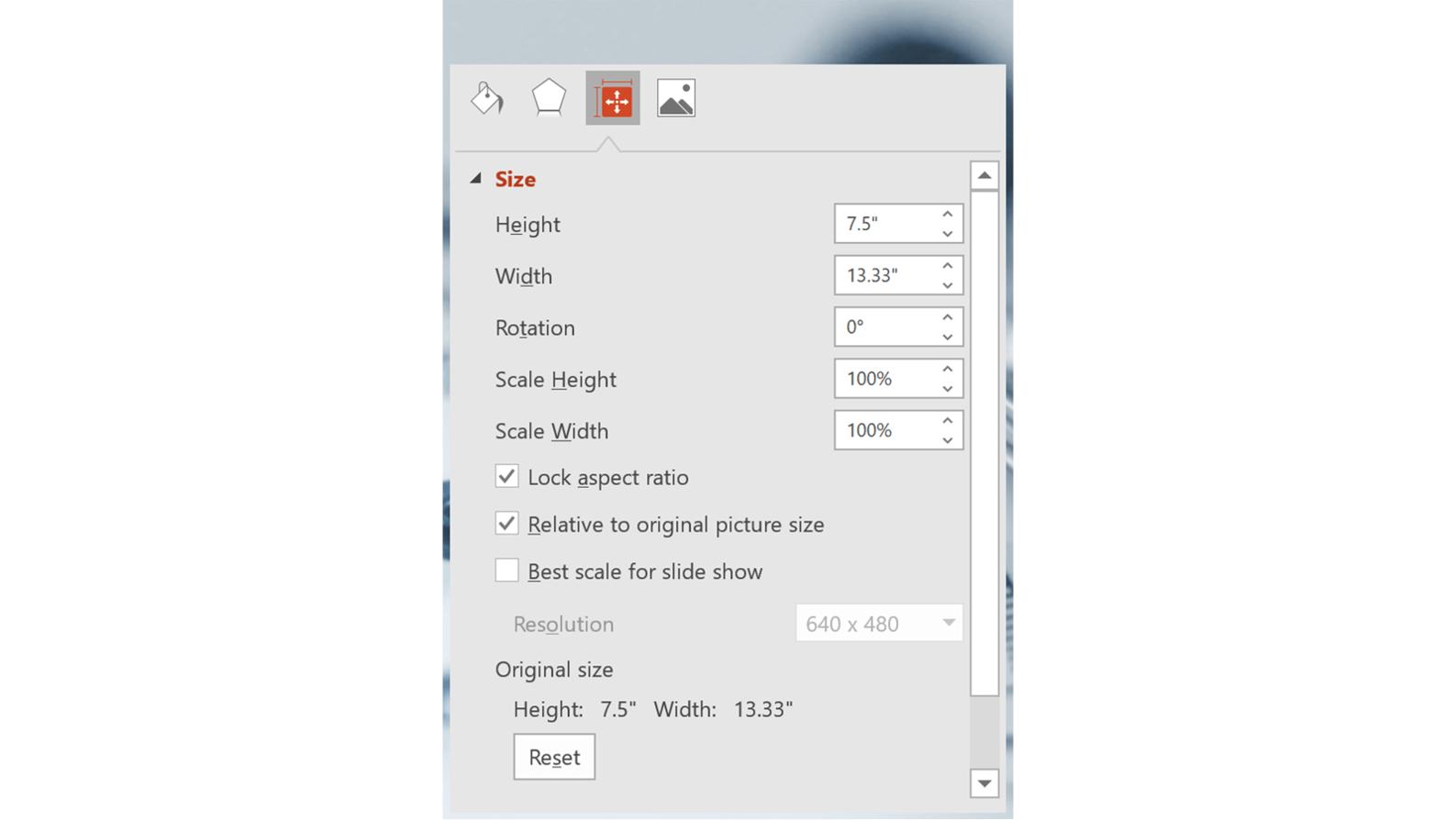
Points may hateful prizes in game shows but in PowerPoint, points are non equivalent to prizes nor pixels. A point is actually 0.75 of a pixel on a 96 DPI monitor which comes from 96 DPI / 72 PPI (dots or pixels per inch versus points per inch). The 96 number comes from the resolution of your monitor (more on that subsequently) and 72 comes from the globe of typography where a indicate is a physical unit of measurement of altitude. A signal (pt) is equal to 1/12 Pica, and 1 Pica = 1/6 inch. Hence i pt = 1/72 inch, meaning 1 inch contains 72 points. Phew!
Let'due south see this in exercise when examining a standard sixteen:9 widescreen slide in PowerPoint. If you click the Design tab followed by Slide Size and choose Custom Slide Size, you'll see the size of your slide in either inches or centimetres:
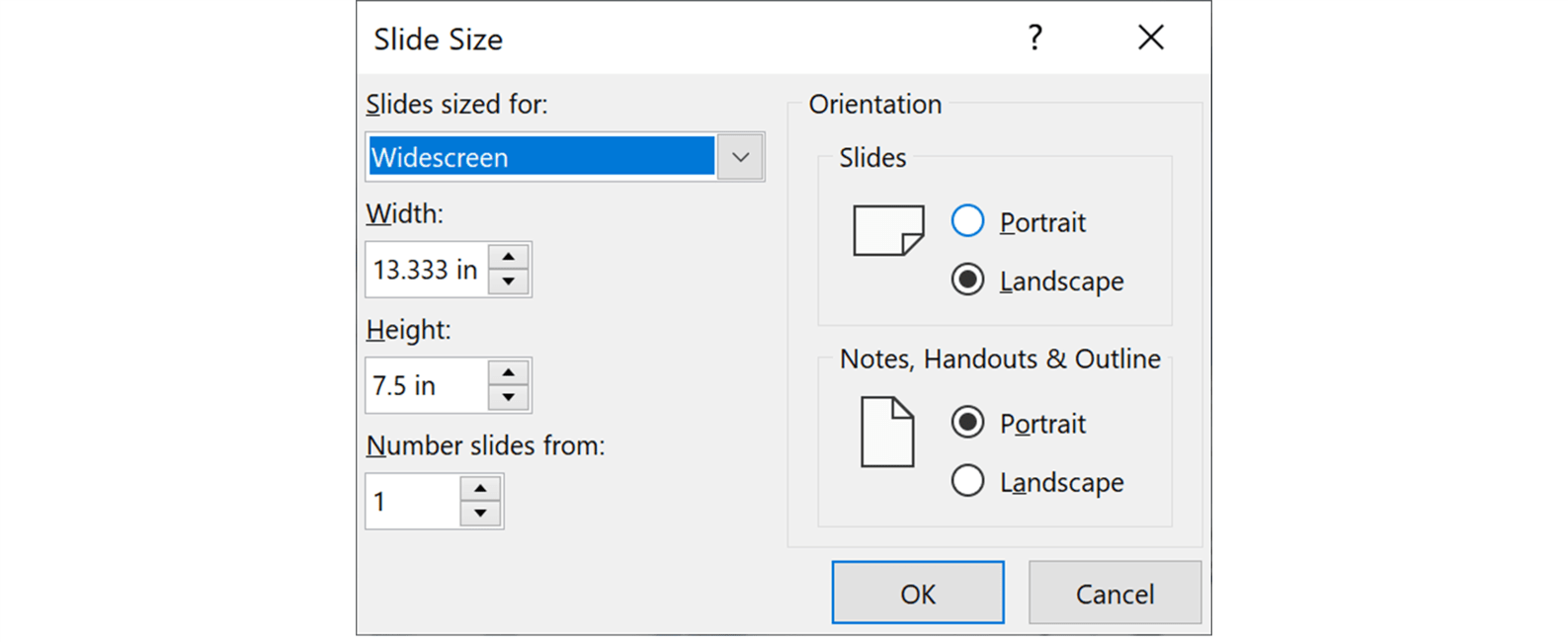
Inches are actually easier to deal with here because you're going to run into conversions using DPI or Dots Per Inch. In the above example the slide has a size of 13.333 10 7.v inches. At present, considering there are 72 points per inch (don't go this confused with dots per inch!) this translates to 960 (13.333 x 72) by 540 (7.five x 72) points. This is what'southward used to scale your picture every bit it's inserted into your slide. That then translates to 1280 (960 / 0.75) by 720 (540 / 0.75) dots or pixels and that is what is used to project your picture during a slide testify.
A little known clandestine is that regardless of the measurement organization assault your computer, you tin can actually enter dimensions for your slide setup and/or objects on your slide by typing in a number followed past px for pixels or pt for points. Every bit shortly equally yous hit return, the number is converted to your default units of measurement. So entering 1in, 2.54cm, 72pt or 96px all yield the same result. Become ahead and try it!
Now, let'south take a look at what happens when yous insert pictures into your slides at various sizes and resolutions.
Below are the settings for the stopwatch picture which we've scaled to 960 x 540 pixels at 72 DPI. Most decent image editor apps will allow you to gear up both the size and resolution and in this example nosotros used the costless GIMP (GNU Image Manipulation Programme) app which is bachelor for both Windows and Mac.
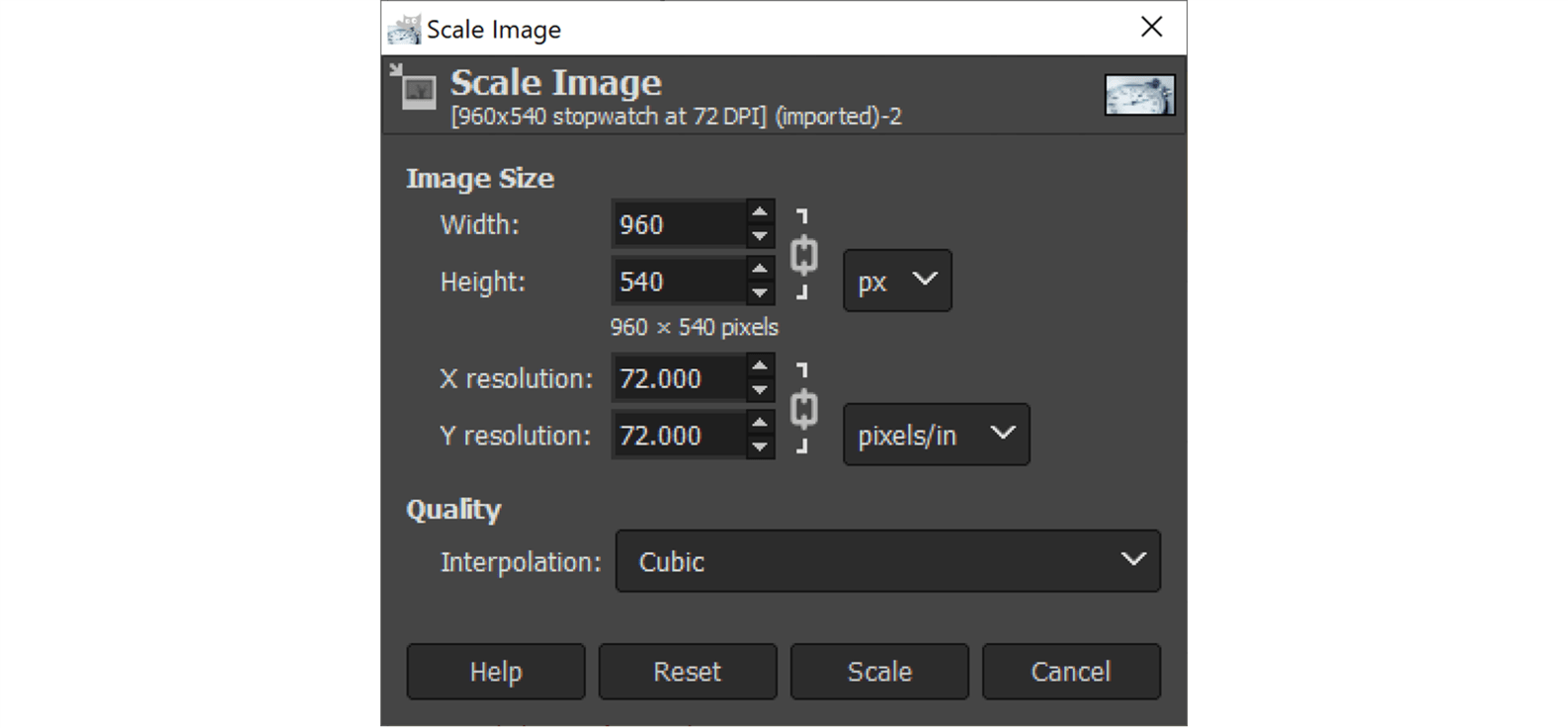
When information technology'south inserted into the slide it occupies the total slide size and PowerPoint has kept information technology scaled at 100%. This is because nosotros accept the aforementioned number of pixels in the picture equally there are points for the slide and the epitome is ready to 72DPI:
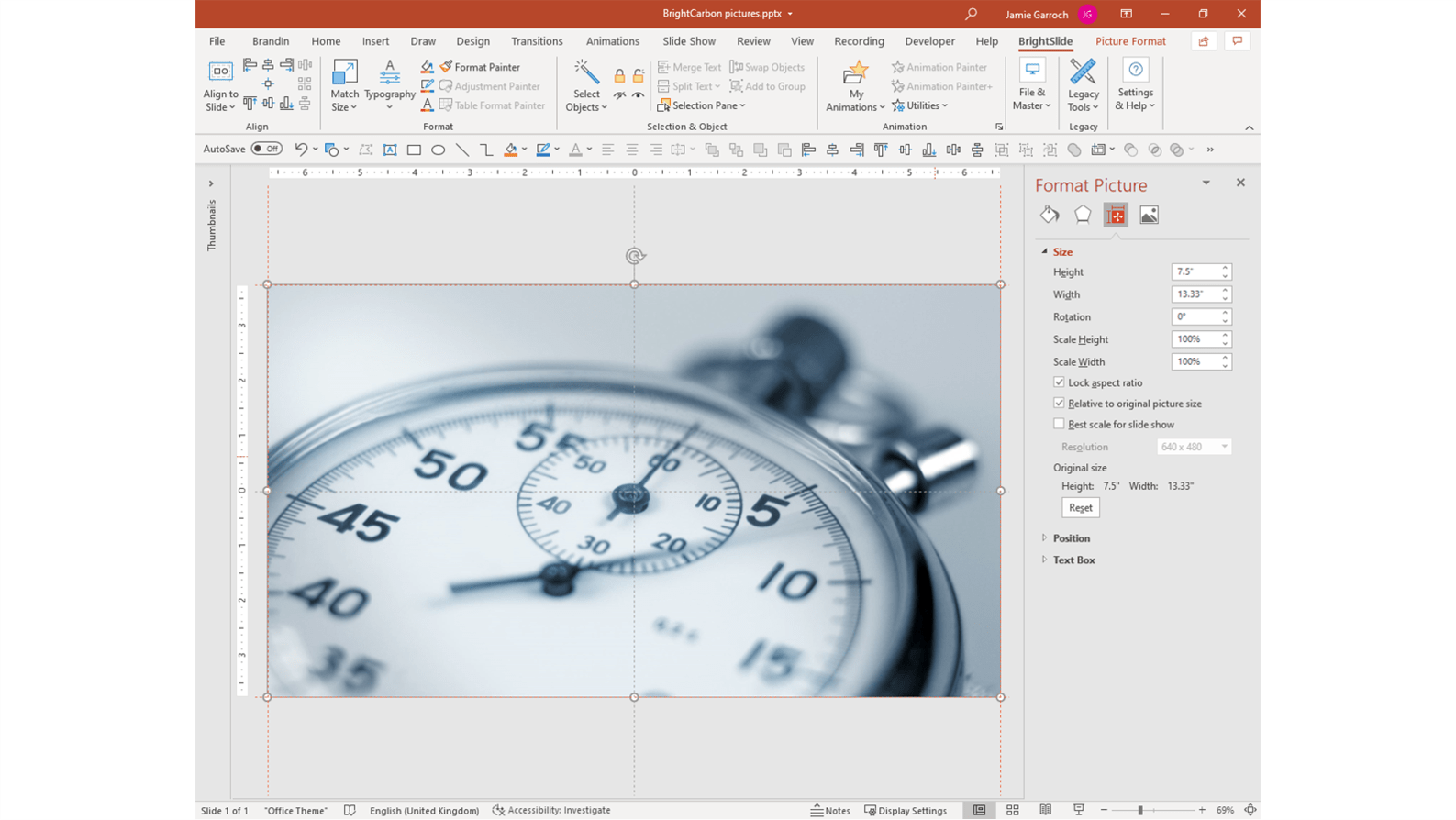
You lot'll go the same result if you rescale the source picture in your preferred prototype editor to 1280 x 720 pixels, but at 96DPI. This is because PowerPoint scales it by the ratio of 72/96 or 0.75.
Making this picture larger than the slide or projecting it at anything bigger than HD720p can cause it to go blurry.
If you now insert the same motion-picture show scaled to HD1080P (1920 x 1080 pixels) at 72DPI you'll meet that it's automatically scaled downwards in PowerPoint to 50% of its original size or ¼ the size of HD1080P so that it fits on the slide:
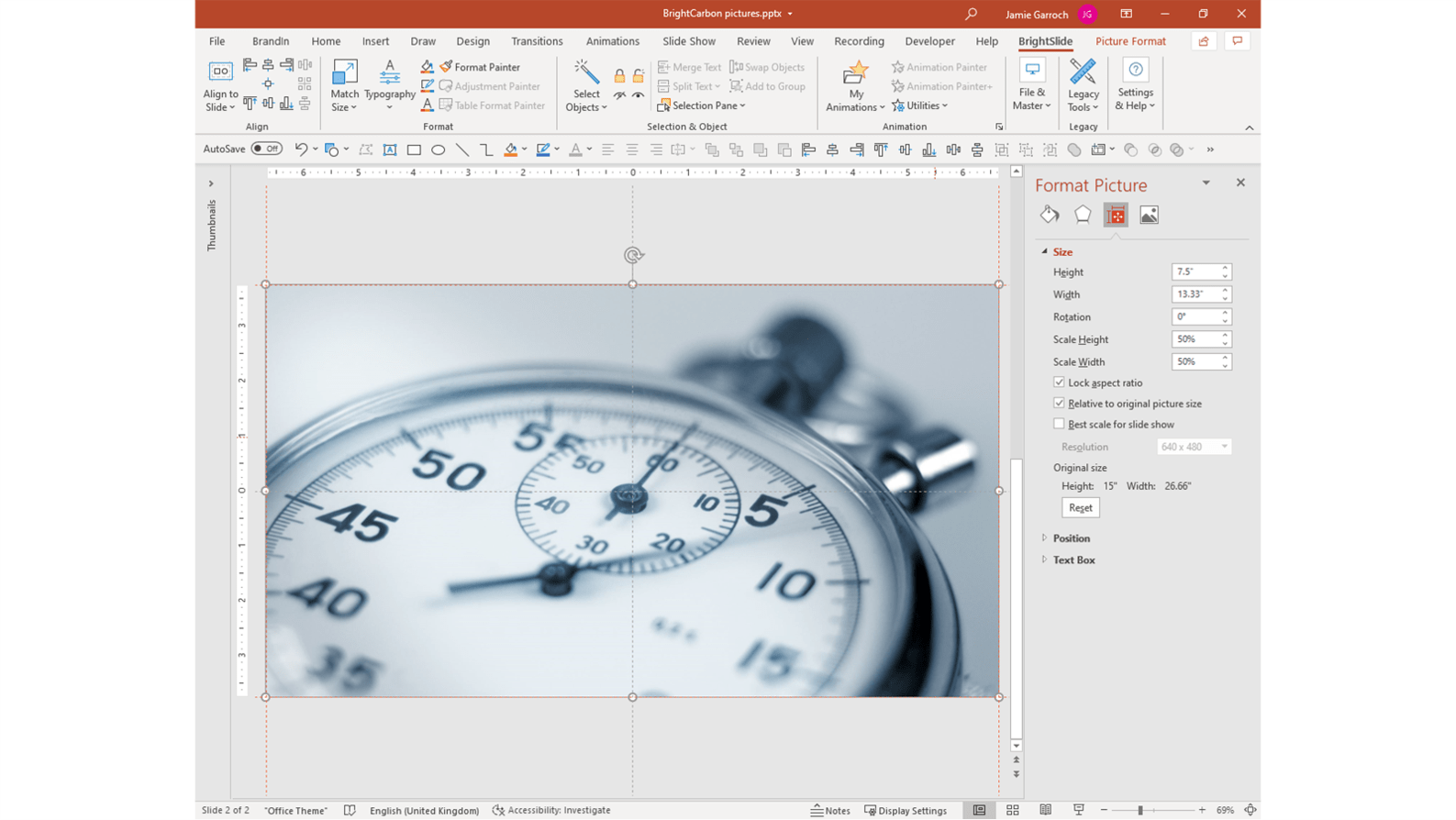
In this example, even though the flick has been scaled to the slide size all of the pixel information is still there for apply when projecting. That means you can display or project this slide at a maximum size of HD1080P without any degradation of the moving picture.
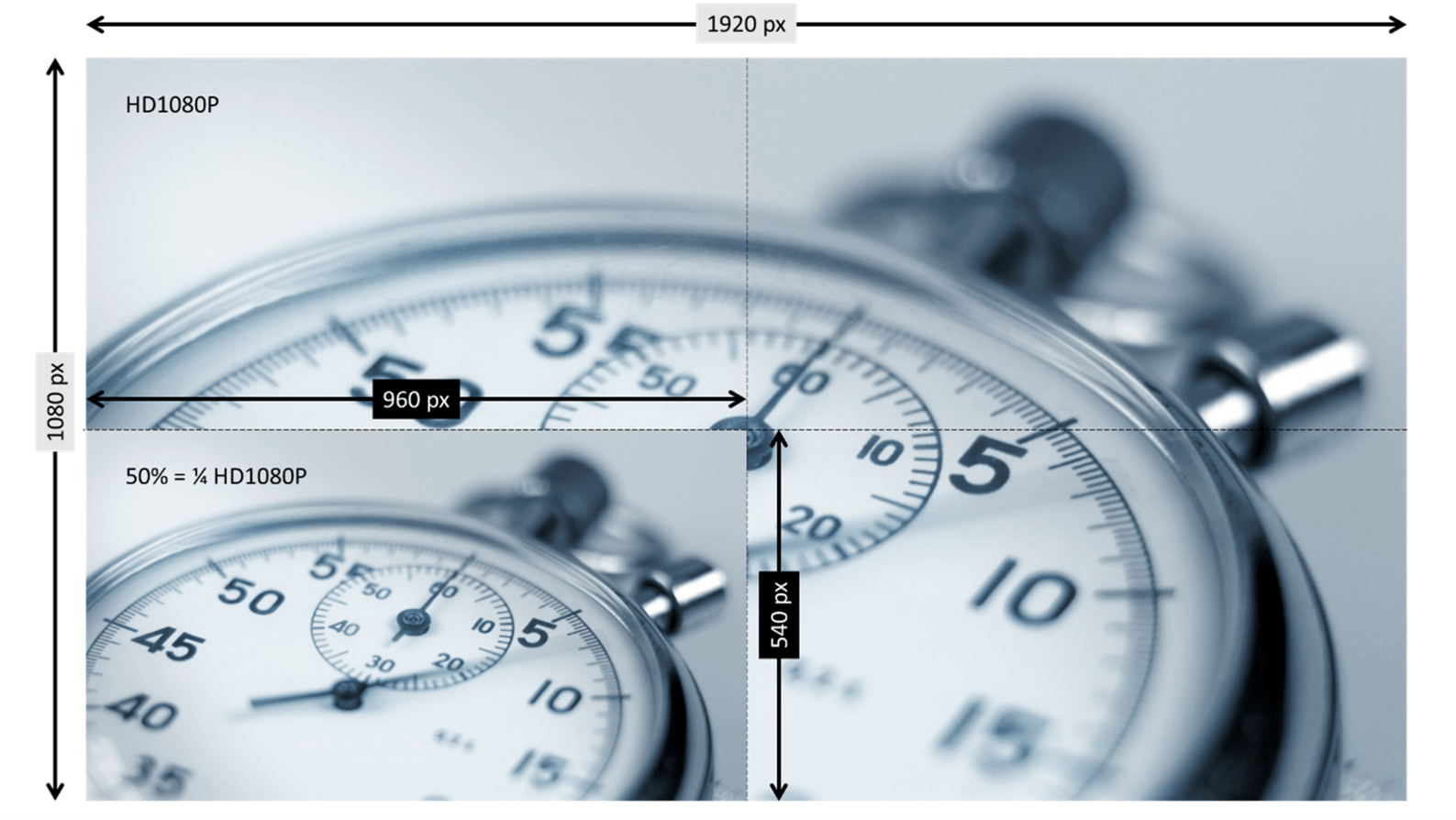
If you lot were to project at a higher size such every bit 4k or 8k HD, there's a chance that the projected image volition not exist pin-point sharp. This depends on the epitome interpolation algorithms in use past the combination of PowerPoint, your graphics card and the projector. If you insert the same picture at HD1080p size simply with the DPI set to 144, it'll get inserted at 100% calibration and fit the slide exactly.
When looking at file size, it's clear to see that it's the number of pixels in the file that makes the difference and that the DPI setting does not impact file size at all. This is the relevant information in Windows Explorer for our test pictures:

So what accept y'all learned?
- That the DPI setting within a flick file is used to calibration the movie as it's inserted onto the slide but it has no impact on the projected quality nor the size of the picture file.
- That these two images are treated every bit the same size when inserted but the second i tin exist projected at a larger size as information technology contains more pixel data irrespective of its DPI setting.
- 960 x 540 pixels at 72 DPI
- 1280 10 720 pixels at 96 DPI
- The second picture will take a larger file size equally it contains more pixel data.
Monitor Scaling
Now you know how DPI has an impact on pictures in PowerPoint, you might be asking yourself how does the Windows scaling affect all of this? When you change the scale factor in Windows Settings what is essentially happening is that the display DPI is being changed. You might have ane HD1080p monitor set to 100% scale and another fix to 200%. The corresponding monitor DPI values for these are:
- 100% = 96DPI
- 200% = 192DPI
This means that in that location are twice equally many dots/pixels in use on the 2nd monitor. The impact on PowerPoint is therefore that y'all need twice every bit many pixels in the image to display it optimally, irrespective of the DPI setting in the picture file. That ways taking your HD1080p film and sourcing a 4k version of information technology, which is 3840 x 2160 pixels.
Other PowerPoint Considerations
If you dig effectually in PowerPoint you'll notice a couple of other features that touch on picture quality. The first is in the ribbon and the second is in the backstage.
Compress Pictures is found in the ribbon when you have a picture selected and you click the Format Pic tab:

This open up a window that allows you to compress the currently selected picture or all pictures in your presentation:
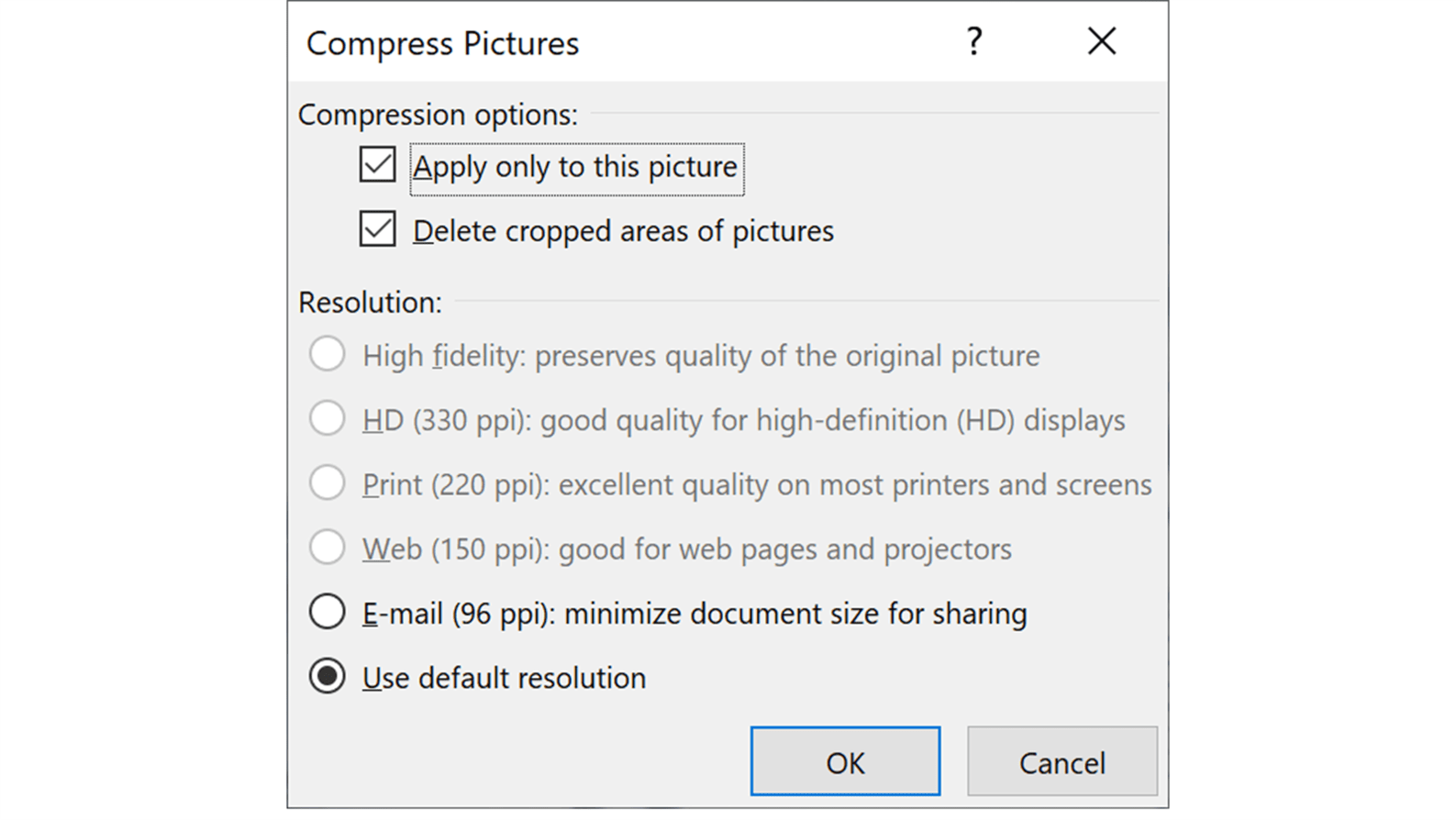
Y'all can click the ? icon in this window for lots more detail from Microsoft on what each of these settings does merely basically, the Resolution section scales the image down to the gear up ppi (ppi here means dpi not points per pixel!). Information technology doesn't scale beyond the electric current DPI setting of the image considering this implies creating new pixel data, which is why you lot'll come across some options greyed out.
You might think that PowerPoint is but changing the DPI setting in the image only it's not. It also changes the size of the image in pixels. To test this nosotros took the original stopwatch moving picture sized to 2048 ten 1203 at 330DPI. Using the shrink pictures tool, the moving picture was prepare to the Web (150 ppi) setting. We so used the free BrightSlide Consign Media Files to find the result in Windows Explorer:

As you can come across, the resolution was indeed inverse from 300 to 150 but the pixel count changed too, by an ratio of ane:2.2 (330/150). PowerPoint did this so that the picture on the slide remained the aforementioned physical in/cm size.
This is manifestly a destructive process every bit pixels are deleted from the picture so utilize it with care. Too destructive is the selection to delete cropped areas which deletes all the picture data outside of your cropping mask.
The other place you'll see DPI is in the backstage when you click File / Options / Advanced, which corresponds to the Use default resolution pick in the widow above. How convenient!
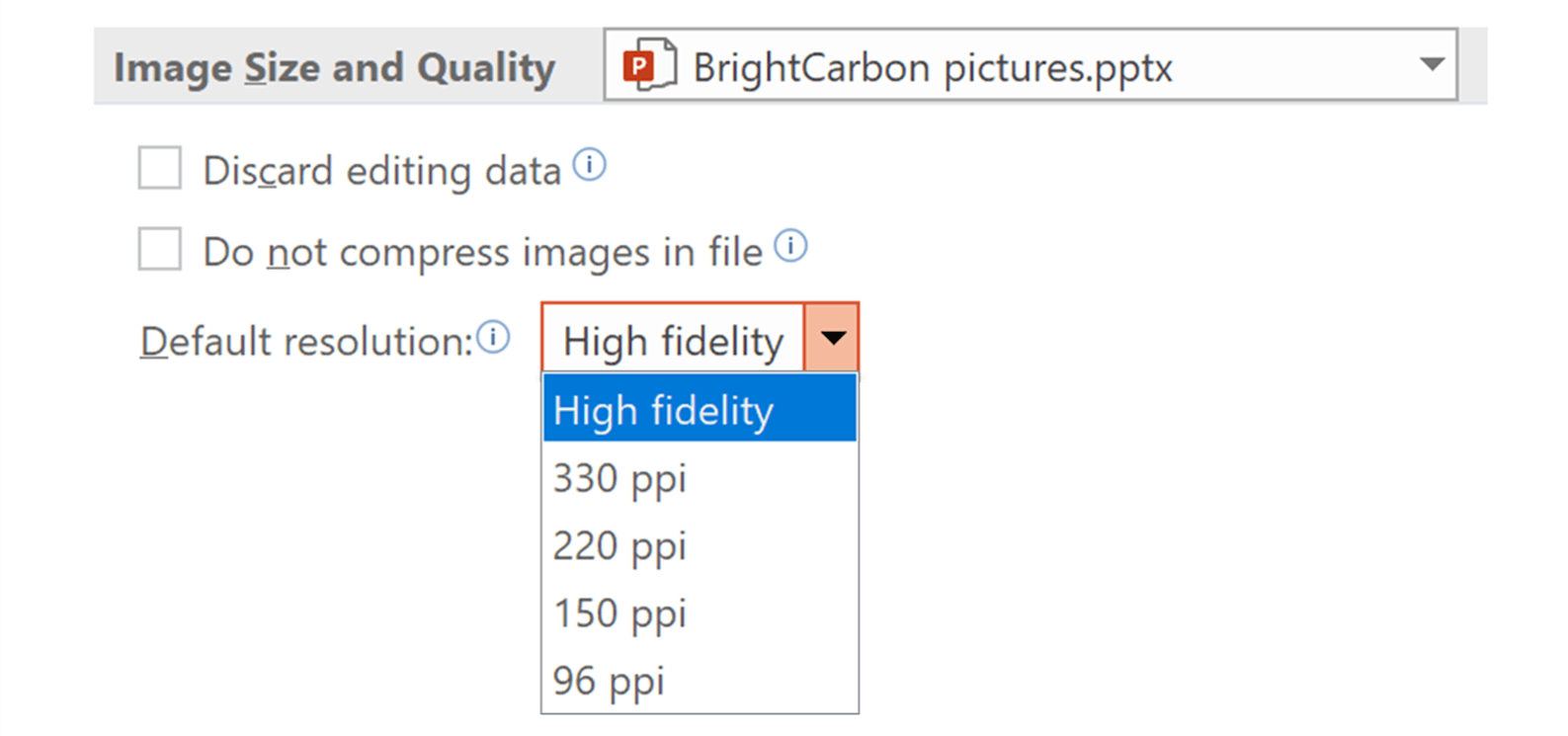
Maximum Size
While y'all're learning all most slide and picture sizes, let'southward complete the picture (sorry!) by roofing the topic of maximum slide size. You might want to know this if y'all're printing your creation onto a large format printer or displaying it on a monster projector. Currently, the maximum size for a PowerPoint slide is as follows:
56 x 56 in | 142.24 ten 142.24 cm | 4032 10 4032 points | 5376 x 5376 pixels
Determination & Recommendation
Pictures in PowerPoint can be tricky to get to grips with. Choosing the correct size has an impact on both the file size of your presentation and the maximum monitor/projection size you can use without degrading quality. In general, if you're projecting at a maximum size of HD1080p, brand sure y'all're using pictures that are created at 1920 10 1080 pixels in size. Set the DPI to 144 if you want them to exist inserted into your slide at 100% scale but remember that the DPI setting doesn't itself bear on file size or the quality of your image or how it's projected during your slide prove. Merely pixels practise that.
Exit a annotate
Source: https://www.brightcarbon.com/blog/powerpoint-picture-size-and-resolution/

0 Response to "How To Set Pixel Size In Powerpoint"
Post a Comment